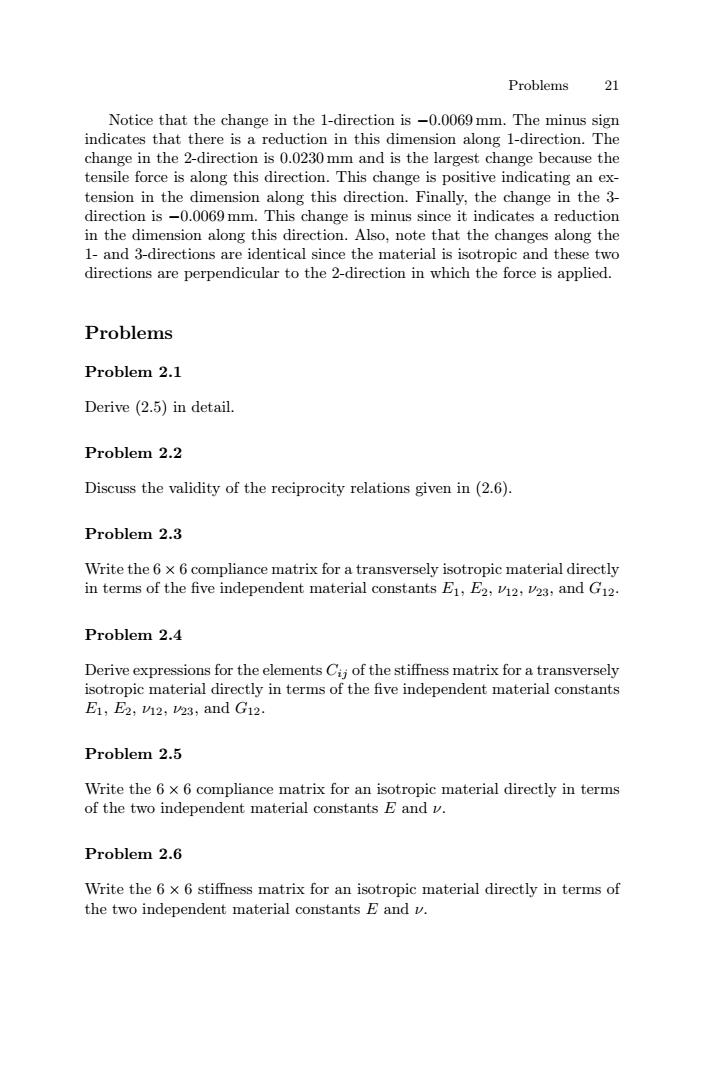正在加载图片...

Problems 21 Notice that the change in the 1-direction is-0.0069 mm.The minus sign indicates that there is a reduction in this dimension along 1-direction.The change in the 2-direction is 0.0230 mm and is the largest change because the tensile force is along this direction.This change is positive indicating an ex- tension in the dimension along this direction.Finally,the change in the 3- direction is-0.0069 mm.This change is minus since it indicates a reduction in the dimension along this direction.Also,note that the changes along the 1-and 3-directions are identical since the material is isotropic and these two directions are perpendicular to the 2-direction in which the force is applied. Problems Problem 2.1 Derive (2.5)in detail. Problem 2.2 Discuss the validity of the reciprocity relations given in (2.6). Problem 2.3 Write the 6 x 6 compliance matrix for a transversely isotropic material directly in terms of the five independent material constants E1,E2,v12,v23,and G12. Problem 2.4 Derive expressions for the elements Cij of the stiffness matrix for a transversely isotropic material directly in terms of the five independent material constants E1,E2,h2,23,andG12. Problem 2.5 Write the 6 x 6 compliance matrix for an isotropic material directly in terms of the two independent material constants E and v. Problem 2.6 Write the 6 x 6 stiffness matrix for an isotropic material directly in terms of the two independent material constants E and v.Problems 21 Notice that the change in the 1-direction is −0.0069 mm. The minus sign indicates that there is a reduction in this dimension along 1-direction. The change in the 2-direction is 0.0230 mm and is the largest change because the tensile force is along this direction. This change is positive indicating an extension in the dimension along this direction. Finally, the change in the 3- direction is −0.0069 mm. This change is minus since it indicates a reduction in the dimension along this direction. Also, note that the changes along the 1- and 3-directions are identical since the material is isotropic and these two directions are perpendicular to the 2-direction in which the force is applied. Problems Problem 2.1 Derive (2.5) in detail. Problem 2.2 Discuss the validity of the reciprocity relations given in (2.6). Problem 2.3 Write the 6 × 6 compliance matrix for a transversely isotropic material directly in terms of the five independent material constants E1, E2, ν12, ν23, and G12. Problem 2.4 Derive expressions for the elements Cij of the stiffness matrix for a transversely isotropic material directly in terms of the five independent material constants E1, E2, ν12, ν23, and G12. Problem 2.5 Write the 6 × 6 compliance matrix for an isotropic material directly in terms of the two independent material constants E and ν. Problem 2.6 Write the 6 × 6 stiffness matrix for an isotropic material directly in terms of the two independent material constants E and ν